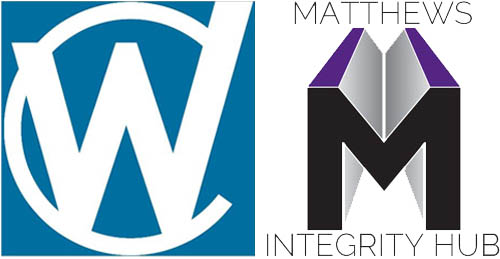WORKING WEEK QUIZ
This week’s subject: ASME L1/L2 Plant Inspector
WELCOME to our TECHNICAL QUIZZES
Each of our technical quizzes is compiled to give you an insight into the technical coverage of codes and standards included in various certification exams in the integrity industry.
ASME L1/L2 PLANT INSPECTOR SAMPLE QUESTIONS
The ASME Plant Inspector programme commenced in the UK in 2003 and was one of the first certificate programmes designed for the in-service inspection/integrity part of the engineering industry. It is subdivided into three levels:
- ASME Level 1: Plant Inspector
- ASME Level 2: Senior Plant Inspector
- ASME Level 3: Principal Plant Inspector/Technical Authority
The question sets below set out some sample questions that are set broadly at the technical level of the content of ASME L1 and L2. When attempting these questions, it is important to consider whether you believe you can intuitively ‘guess’ the correct answer or whether you have a full understanding as to why the answer is correct. The best way to check this is to ask yourself if you could explain why the answer is correct to someone else, who has a lot less knowledge.
There is only one correct answer to each question. The answers are given at the end so you can check how you did.
Here’s four ASME L1-style Questions
L1 Q1. Damage Mechanisms: Plant inspectors need to know about these
Which of these damage mechanisms (DMs) is not classed as corrosion?
a) Stress corrosion cracking (SCC)
b) Creep
c) MIC
d) Weld attack
L1 Q2. Corrosion rate calculations. Yes, unfortunately some codes still use feet and inches as measurement units.
A pipe has the following wall thickness data recorded in its inspection reports. What is the short-term corrosion rate when calculating remaining life?
- Thickness when new in year 2000 = 1.1in
- Thickness measured in year 2005 at process change = 0.7in
- Thickness measured in 2008 = 0.6in
- Thickness measured in 2010= 0.5in
a) 0.22 in/yr
b) 0.04 in/yr
c) 0.05 in/yr
d) 0.10 in/yr
L1 Q3. Written Schemes of Examination (WSE). As a plant inspector you will work to a WSE so you need to be able to decide if their content is correct.
A WSE is being prepared for a recently acquired old, large, BS1500 vessel (MAWP 10 Bar) constructed out of an unknown grade of plain carbon steel, which of the following NDE methods would you not expect to be of much benefit if shown on the WSE for the first inspection?
a) Hardness tests
b) Hydraulic test to 1.3 x MAWP
c) RT of shell-to-shell circ welds
d) PMI test
L1 Q4. Storage tank inspection.
What is the correct order for checking the integrity of large circular atmospheric storage tank components during a preliminary visual inspection carried out prior to an internal inspection?
a) Bottom, shell, roof
b) Roof, shell, bottom
c) Shell, roof, bottom
d) It doesn’t really matter
Here’s four ASME L2-style Question
L2 Q1. WSE high stress area; Inspectors are not designers but you need to know where to look for defects
A pressure vessel with torispherical ends is subject to an internal corrosive process and mechanical vibration condition. It is fitted with several nozzles set-throughout the shell. Which of the following would require particular emphasis in the WSE?
a) Possible corrosion of the nozzle-to-shell welds
b) Possible buckling of the vessel shell, plus peaking if it operates at high temperature
c) Possible cracking of shell-to-head welds
d) Possible cracking of shell-to-shell SAW welds
L2 Q2. Weld overlay lining.If the WSE is not good enough, and you follow it blindly, you won’t find defects that are there.
A vessel has had previous repairs made to its internal weld overlay lining. What site inspection activity should be shown on the WSE to check whether the overlay repair has been previously correctly heat treated?
a) PMI test (XRF or similar method)
b) Replication (metallurgical tests)
c) A sample removed for laboratory testing
d) Surface indentation test
L2 Q3. Objective of Non-intrusive inspection (NII). May we suggest you think very carefully before just ticking box (d).
On balance, the main objective of replacing internal visual inspection with NII (on-stream inspection under API terminology) is:
a) To save time and effort
b) To save inspection cost
c) To do a better inspection
d) All of the above
L2 Q4. Heat exchanger corrosion. These are covered by the TEMA code.
What is the disadvantage of designing a heat exchanger in corrosive service that has a plain carbon steel shell and channel and a stainless-steel tube-sheet?
a) The tube sheet suffers from impingement opposite the fluid inlet
b) The tube sheet and channel will have different inspection intervals
c) The tube sheet suffers from galvanic corrosion
d) The shell channel suffers from galvanic corrosion
Once you have had a try at the questions, have a review of The Answers
For details of upcoming ASME L1/L2 course dates and availability see the Wilkinson Coutts website www.wilkinsoncoutts.com or contact Paul Wilkinson direct on paul@wilkinsoncoutts.com Tel 07753 8088738
If you did well and want to try a harder question set, have a go at the MATTHEWS MASTERCLASS Integrity Quiz and see how you do.





